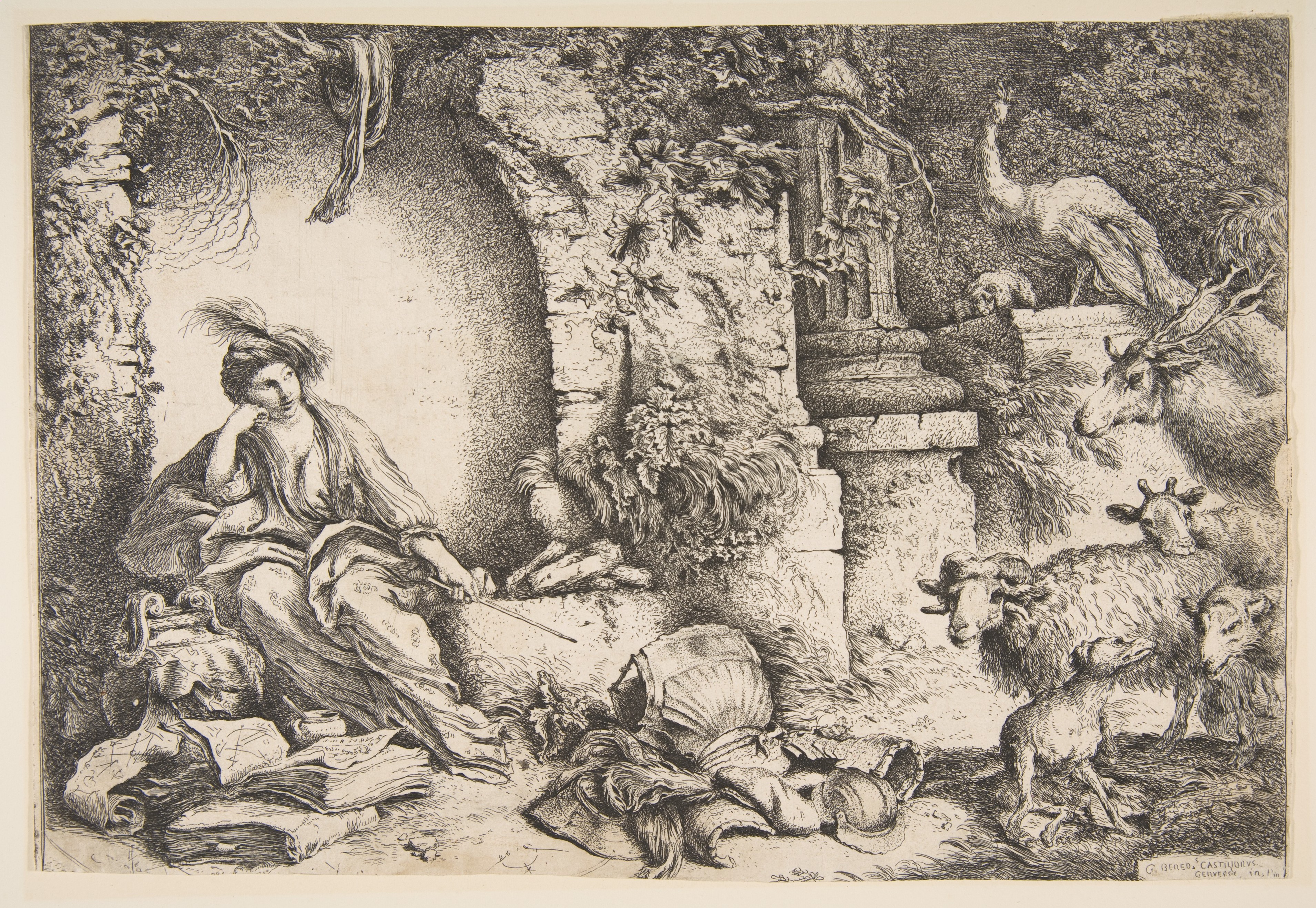
Giovanni Benedetto Castiglione, Circe changing the companions of Ulysses into Beasts (1650–51). Photo © The Metropolitan Museum of Art, New York City. CC0 1.0 Universal (CC0 1.0) Public Domain Dedication. https://www.metmuseum.org.
In 1758, Carolus Linnaeus helped to consolidate a new paradigm for human-animal comparisons when he first used primates
to name the category including human beings and anthropoid apes. Especially before the eighteenth century, other creatures contended for the position of most human-like animal. Because elephants performed impressive feats like mourning their dead, they commanded recognition as rational animals. Cooperating within a hive, honeybees proved to be admirable political ones. Even according to physiological criteria, non-apes bore more significant likenesses to humans: pigs possessed an allegedly identical internal anatomy, compromising human dignity; meanwhile, horses stood majestically upright, approximating bipedal posture. As human qualities appeared among massive pachyderms and tiny insects, human-like bodies were disclosed by reviled swine and noble equids.
Recovering these all but forgotten creatures, I show how they operate within a pre-Enlightenment paradigm for species differences. Attributing little importance to simians, that paradigm instead reinforces or questions distinctions by imagining metamorphoses of humans into visibly different animals, who nevertheless evince fundamental similarities. From Giovanni Battista Gelli's La Circe (1549) to Jonathan Swift's Gulliver's Travels (1726), transformation narratives variously celebrate or satirize human nature, but their evaluations ultimately depend upon animals other than apes.
While other scholars regard Cartesian dualism as the crucial turning point in attitudes toward animals, the European discovery
of anthropoid apes marks a more decisive transition, the advent of a newly rigid hierarchy of species. Metamorphoses about defectors from humanity recede; narratives about human-ape miscegenation take their place. Such tales, as in Edward Long's notorious case, promote pseudo-scientific modes of racialized xenophobia. They also inaugurate the historically specific form of speciesism that has characterized western European and Anglo-American cultures since the Enlightenment. Earlier literature offers an opportunity to estrange the post-Enlightenment paradigm. By understanding how animals have been imagined differently in the past, it becomes possible to reimagine them now without tropes of metamorphosis or miscegenation—and without subscribing to dubious hierarchies. This project thus convokes theory, criticism, and history for the post-humanist project of a multispecies future.